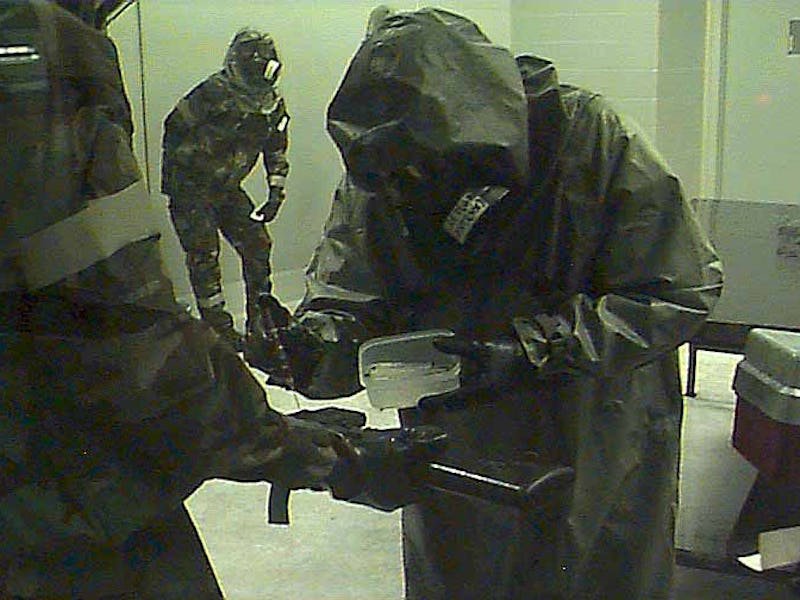VX Nerve Agent, a Weapon of Mass Destruction, Kills Swiftly
The potent chemical was found on Kim Jong Nam's corpse.

The official medical report on Kim Jong Nam, the half-brother of North Korea’s late dictator Kim Jong Il, has revealed that he was indeed killed by VX nerve agent applied to his face in February. Kim died shortly after two women approached him in Kuala Lumpur International airport and smeared an unknown substance on his skin, eyes, and clothing.
As the Wall Street Journal explained on Tuesday, the postmortem report written by a Malaysian government pathologist revealed that officials had found traces of VX nerve agent on Kim’s body.
It isn’t clear who is behind the attack, though North Korean officials have denied their involvement. Whoever it is must not have had an easy time getting their hands on the potent compound, which the U.S. Centers for Disease Control and Prevention (CDC) say has only one official use — as a chemical warfare agent.
Kim Jong Nam was assaulted by two women at Kuala Lumpur International Airport in February.
Stockpiles of VX — short for “venomous agent X” — have been continually destroyed since the Chemical Weapons Conventions of 1997 outlawed the use of chemical weapons and their precursors. Currently classified by the United Nations as a weapon of mass destruction, VX is a potent, rapid-acting poison that cripples the nervous system, causing paralysis and eventual death by suffocation. The CDC calls it “the most potent of all nerve agents.”
It kills quickly, even after exposure to infinitesimal amounts. Death by VX, which is a clear, motor oil-like liquid at room temperature, can occur after breathing in 25 to 30 milligrams, or just 10 milligrams if it comes into contact with the skin.
Once it’s in the body, it works rapidly. Like other nerve agents such as sarin, VX’s lethal effects take place at the level of the cell by acting on a neurotransmitter called acetylcholine. Neurons normally rely on acetylcholine to send signals to muscles ordering them to move, and once those signals have been sent, acetylcholine breaks down, ending that line of communication. What VX does is prevent acetylcholine from breaking down, resulting in an overabundance of communication: Before long, the muscles get overstimulated and the brain can no longer control the body’s movements.
The immediate symptoms of VX nerve agent exposure include blurred vision, chest tightness, drooling and sweating, rapid breathing, and an abnormally low or fast heart rate. Its effects become most problematic when the muscles that lose control are the ones that guide the chest’s rise and fall during breathing. Once these are paralyzed, breathing becomes impossible, and the individual dies by suffocation.
Since VX also has potent effects on people who inhale it, there was some speculation about how the women who assaulted Kim managed to put VX on him without themselves getting affected. In February, scientist Raymond Zilinskas of the Middlebury Institute of International Studies in California, told the Guardian that the VX must have been applied in two separate, inert parts that mixed together on Kim’s body to form VX itself.
“Even if they [the suspected attackers] were wearing gloves, the fumes would have killed them,” he said, suggesting that they used a “binary concoction” instead. The official report, which noted traces of VX precursors on Kim’s body, corroborates this theory.